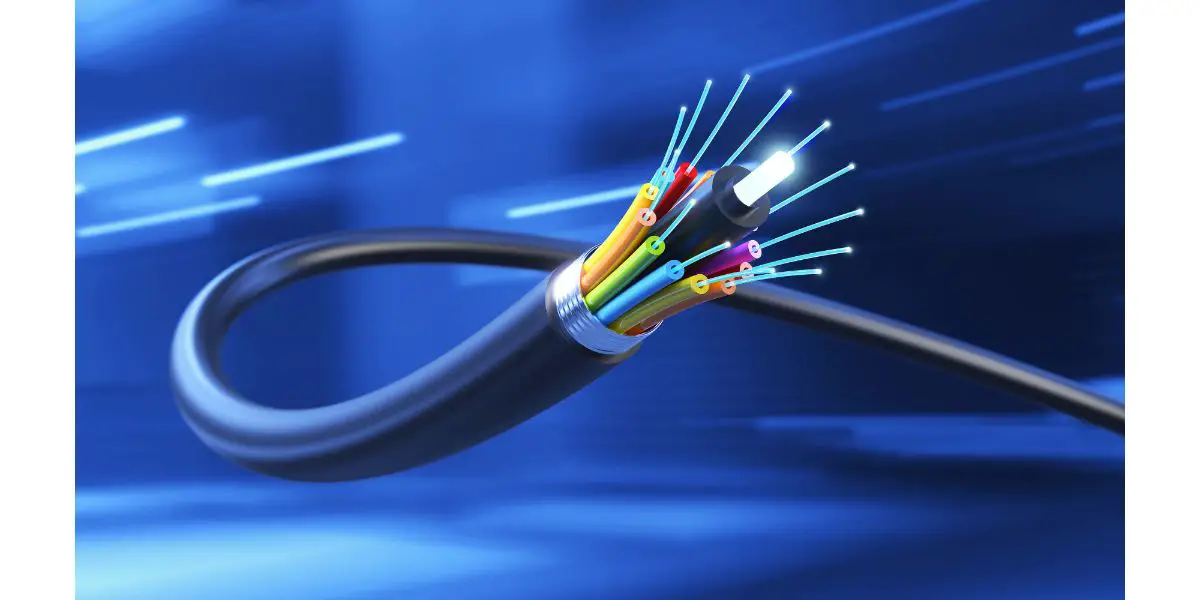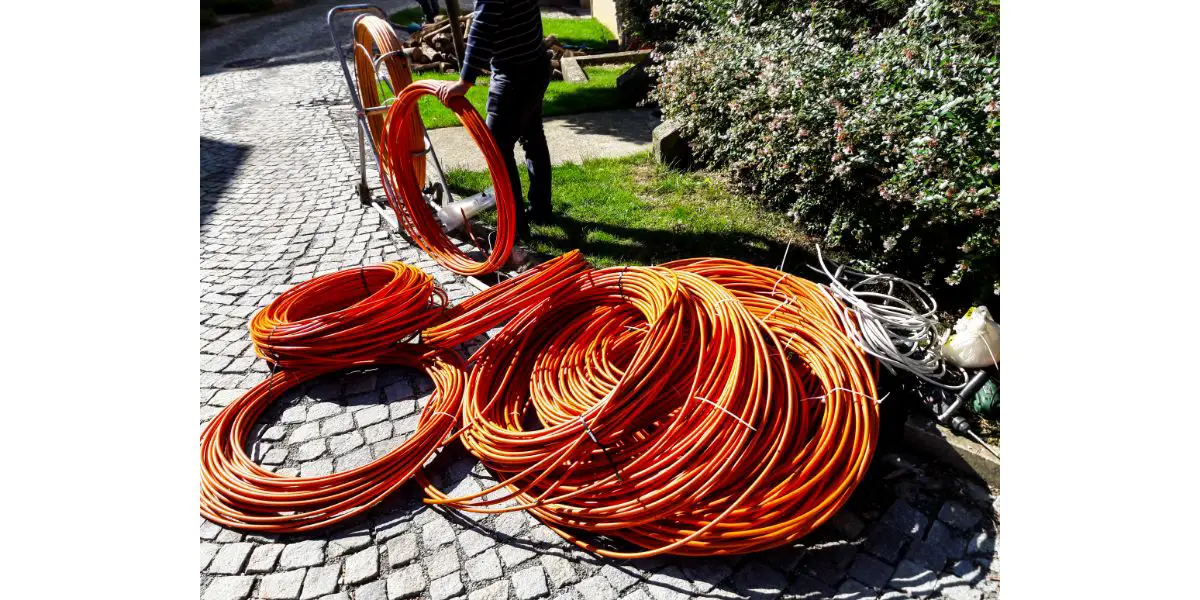Disclaimer: This post may contain affiliate links, meaning we get a small commission if you make a purchase through our links, at no cost to you. For more information, please visit our Disclaimer Page.
Networking various servers and machines for data exchange is important for businesses. To do so, companies lay and maintain cables. These physical connections must support the movement of large amounts of data across great distances at high speeds.
To ensure they can fulfil these requirements, developers created and refined fiber optic cables. These cables are made of small strands of fine glass inside an insulating sheath. These tiny glass strands are different from the typical wires you might see in other kinds of cabling. They can also send data further and faster than these other types.
Because it supports so much, many wonder how fragile the glass strands are. Each strand is finer than a single human hair. Thus, you wonder how delicate each internal component is. It is difficult to determine, but we can estimate the strength of fiber optic cables here.
Table of Contents
Do Fiber Optic Cables Break Easily?
How easy it might be to break a fiber optic cable depends on its protection level. It is true that each fiber is very fragile. And without a protective barrier, the risk of breaking is quite high. However, most fiber optics have layers of protection surrounding the strands. These layers provide additional protection to mitigate its risk of damage.
If you bend individual strands, you notice the speed or quality of data you are transmitting through the units lessens. This loss usually happens when the signal cannot pass through the strands. The sharp curves in the cabling block or weaken these signals. Similarly, the cables will snap if you bend them far enough.
Most manufacturers will place additional insulation jackets around the strands to protect the cables from breaking. Each jacket increases the overall thickness of the glass, making the strands wider and stronger.
Sometimes, they are placed in flexible metallic tubes to further strengthen the cables. These tubes limit how far everything can bend. After that, they wrap the tubes in further insulation.
What Causes Fiber Optic Cables To Break? (6 Problems)
Despite the above efforts to strengthen these cables, they can break occasionally. This section covers some of the most common causes of this kind of damage.
1. Wildlife
To facilitate data transfers over such long distances, companies often bury fiber optic cable installations. The paths go through non-residential or less urbanized areas.
Although the cables are underground, they are still at risk to wildlife in these areas. Many of these animals can dig far enough to expose some of the fiber optic lines.
Then, they chew on them, damaging the insulation and the delicate glass strands inside the units. In some cases, the cables are exposed to the elements, further damaging the installation.
2. Bad Weather
While burying the fiber optic cables is an excellent way to protect them from the elements, they are not immune to extreme weather.
Strong winds, heavy snowfall, torrential rain, or flooding can damage the cables. Some extreme weather anomalies, such as tsunamis or earthquakes, may completely sever the fiber optic connections.
3. Crushing
Some things can crush fiber optic cables. The extreme force could bend or snap the glass fibers.
Ice is the most common element that crushes these installations.
When excess moisture gets into the fiber optic cable installation, it can freeze inside the enclosure. As it freezes, ice forms, and it may do so in blocks or chunks that are heavy enough to crush parts of the cable.
4. Construction
Construction is another major cause of fiber optic breakage or interruptions. Sometimes, construction happens in areas that might have fiber optics installation.
In most cases, a professional team would know they are digging or building near a fiber optic site. However, things can go out of hand, and their equipment could accidentally cut or smash some cables.
This risk might be higher for individuals who want to dig or construct anything near their property lines. While companies advise people to call before they dig out of safety, some are just too selfish to care.
5. Vandalism
Unfortunately, some people destroy areas with fiber installations intentionally. Some may do this out of anger, but others intend to steal the installations’ components.
Some materials used in fiber optics installations are quite valuable in the right markets. And some people might exploit that value at the expense of others.
6. Fire
Although fire could result from a natural disaster, it could come from a few sources besides a weather event. For example, some may set intentional fires that can hurt a fiber optic installation.
This could be true even if the individual or group in question didn’t target the fiber optics specifically. In other cases, a fire in one area might move or spread to where the fiber optic cables are.
How Often Do Fiber Optic Cables Fail?
You might have heard several instances where a fiber optic installation failed. However, they do not predict the overall likelihood of any installation failure in the future.
Several factors affect the strength and durability of a particular fiber optic network. Some of the primary considerations include:
- The initial strength of the cables
- The rate at which the materials in the cables might degrade
- Flaws during the manufacturing process
- Other external factors that could contribute to this weakness
Once you know some of these things, you might be able to calculate how long your installation should last. Therefore,
- Surface flaws can shorten the fiber optic’s lifespan, especially if exposed to extreme conditions.
- Additional coatings or insulation sheaths can reduce the amount of degradation over time.
- The installation process is also at play. A qualified installer should use methods that don’t subject the cables to unnecessary stretching.
How Do You Maintain Fiber Optic Cables?
If you’re working with your fiber optics, you can follow a few recommendations to ensure you’re keeping them going at high levels.
1. Protect the ends of the cables when you unplug them. After you take a cable out of a transceiver, put a protective cap over the end that is now exposed.
2. Anchor the cable properly. You should ensure the cable is not hanging or falling under its weight. Use anchors to secure it and distribute the weight.
3. Avoid doing anything that might bend the cables.
4. If you need to plug or unplug the cables a lot, you could damage the connectors on the ends. To increase a cable connector’s longevity, you can use an extension to absorb the wear that would otherwise go to the cable.
5. Tiny deposits of dust or oil can build up over time. In turn, these deposits could disrupt the strength of the signal. Keep your cables clean to ensure the strongest possible signal. It is a good idea to use only the cleaning products the industry recommends for fiber optics.
Conclusion
Cables that use fiber optics provide top speeds for large packets of data. Although they are quite fragile, developers have devised ways to strengthen and protect them from damage. Some risk to cable installations may be unavoidable, but there are things you can do to keep those problems to a minimum. Similarly, taking good care of your fiber optics can increase how long they last.


